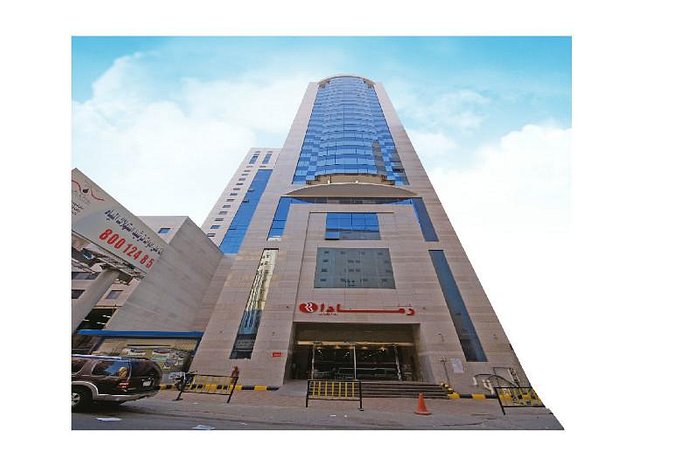Developing infrastructure in high-risk zones presents one of the most pressing challenges of modern urban planning and development. These regions need a forward-thinking strategy to reduce risks and safeguard people, property, and investments since they are susceptible to natural disasters, including earthquakes, floods, hurricanes, and wildfires. Because these areas are dynamic and unpredictable, traditional construction and planning techniques frequently come short, resulting in catastrophic harm during disasters.
In this field, artificial intelligence (AI) is becoming a disruptive force by providing cutting-edge instruments and techniques to improve sustainability and resilience. Planners, engineers, and legislators can create, deploy, and oversee infrastructure that not only endures harsh environments but also adjusts to changing hazards over time by utilizing AI. AI is essential for handling the particular difficulties of high-risk sectors because of its capacity to handle enormous datasets, produce predictive insights, and improve resource allocation.
The Complexity of High-Risk Zones
High-risk zones are regions where environmental and natural conditions pose significant threats to human habitation and infrastructure stability. Frequent events like storms along the coast, regular flooding in river basins, or seismic activity in tectonically active zones are common characteristics of these locales. These regions’ vulnerabilities are made worse by the effects of climate change, which include more prolonged droughts, stronger storms, and rising sea levels.
Infrastructure development in these areas necessitates a sophisticated comprehension of the associated dangers. Planners need to take into account a variety of elements, including terrain, soil quality, climate patterns, and urban congestion. Furthermore, the infrastructure itself—whether it is buildings, bridges, roads, or utilities—must be planned to address both present demands and future difficulties. Even if they work well in some situations, traditional planning methods frequently lack the flexibility and accuracy required to handle the complexity of high-risk areas.

AI’s Role in Predictive Risk Assessment
The capacity of AI to forecast dangers with previously unattainable accuracy makes it one of the most potent tools for infrastructure design. Through the examination of vast datasets from sources like satellite imagery, seismic activity logs, and historical weather records, artificial intelligence (AI) algorithms are able to spot patterns and connections that human analysts frequently miss. Planners are better able to foresee possible catastrophes and take preventative measures thanks to these insights.
For example, flood risks can be accurately predicted using machine learning algorithms that examine rainfall and river flow data. Similarly, artificial intelligence (AI) algorithms can forecast earthquake probability and intensity by analyzing geological data and fault line activity. Artificial intelligence (AI) systems can evaluate vegetation density, wind patterns, and humidity levels in wildfire-prone areas to forecast fire outbreaks and their possible spread. Because they enable well-informed decision-making and preemptive interventions that lower financial losses and save lives, these prediction capabilities are crucial in high-risk circumstances.
AI in Optimal Site Selection
Selecting the best location for infrastructure development is crucial in high-risk situations. Poor site selection can increase vulnerabilities and have disastrous effects when disasters occur. By evaluating multiple factors simultaneously, AI-powered systems provide a systematic approach to site selection.
AI systems are able to evaluate accessibility, elevation, closeness to hazard zones, and land stability through geospatial analysis and data integration. This guarantees that infrastructure projects are resilient to environmental difficulties and functional. AI, for instance, can recognize high places that are less likely to flood in flood-prone areas. Algorithms can identify regions in seismic zones with stable soil compositions that lower the chance of a structural collapse. Thanks to this information, planners can prioritize safety while optimizing land use.
Revolutionizing Infrastructure Design
AI’s influence extends beyond site selection to the design phase of infrastructure development. Advanced simulation tools powered by AI allow engineers to model how structures will perform under various stress conditions, such as high winds, heavy rainfall, or ground shaking. These simulations provide valuable insights into potential vulnerabilities, enabling designers to refine their plans and create more robust structures.
AI, for instance, can recommend changes to structural reinforcements or building materials that improve durability without significantly increasing prices. AI can also suggest creative architectural layouts that lessen damage in the event of a disaster, such as flexible foundations for earthquake-resistant buildings or aerodynamic shapes for buildings that are at risk from hurricanes. Incorporating AI into the design process might assist developers in increasing the standard for resilience and safety.

Real-Time Monitoring and Disaster Response
AI is transforming disaster management by enabling real-time monitoring and rapid response capabilities. In high-risk zones, continuous monitoring of environmental and structural conditions is essential for early detection of potential hazards. AI-powered sensors and IoT devices embedded in infrastructure provide a constant stream of data, which is analyzed in real-time to identify anomalies and trigger alerts.
For example, sensors placed on bridges can detect stress levels or temperature fluctuations that indicate structural weaknesses. Similarly, flood monitoring systems equipped with AI can track rising water levels and predict when a breach might occur. In earthquake-prone areas, seismic monitoring networks can provide critical seconds of warning, allowing residents and authorities to take protective measures.
AI is essential for coordinating response activities during emergencies. To produce precise situational maps, algorithms can handle enormous volumes of data from various sources, including social media, satellite photography, and emergency call centers. First responders are guided by these maps, which aid in effectively distributing resources and prioritizing rescue operations. By providing customized notifications and updates to impacted groups, AI also makes communication easier and guarantees that important information reaches the people who need it most.
Promoting Sustainability Through AI
Sustainability is a crucial consideration when constructing infrastructure in high-risk locations. By reducing environmental impact and optimizing resource utilization, AI promotes sustainable practices. AI-driven solutions, for instance, can improve waste management, lower water usage, and increase building energy efficiency.
Renewable energy technologies are crucial for ensuring power continuity in areas that are vulnerable to natural disasters. By anticipating energy demand, regulating supply, and overseeing storage options, AI improves these systems. Furthermore, AI may direct the incorporation of green infrastructure—such as plants and porous surfaces—which reduces flooding and enhances urban resilience. AI lessens the environmental impact of infrastructure projects and increases their capacity to adapt to new challenges by fostering sustainable development.
Collaborative Efforts and Policy Frameworks
The successful implementation of AI-driven planning requires collaboration among various stakeholders, including governments, private developers, technology providers, and local communities. Policymakers play a crucial role in creating frameworks that facilitate the use of AI while addressing concerns related to data privacy, cybersecurity, and equitable access.
Public-private partnerships are particularly effective in advancing AI solutions for high-risk zones. Governments can provide funding and regulatory support, while private companies contribute technological expertise and innovation. Community involvement is equally important, as local knowledge and participation ensure that infrastructure projects address the specific needs and priorities of the affected population.
Addressing Challenges and Ethical Considerations
Despite its potential, AI-driven planning faces challenges that must be addressed to ensure its effectiveness and inclusivity. High implementation costs can limit access to AI technologies, particularly in developing regions. Technical complexity and a lack of skilled professionals also pose barriers to adoption.
Ethical considerations are paramount in the use of AI for infrastructure planning. Developers must ensure that AI solutions are inclusive and prioritize the safety of vulnerable populations. Transparency in data usage and decision-making processes is essential to build trust among stakeholders. By addressing these challenges, planners can harness the full potential of AI while promoting equity and social responsibility.
A Vision for the Future
The future of AI-driven planning in high-risk zones is promising, with advancements in machine learning, robotics, and IoT set to revolutionize the field. Autonomous systems capable of self-repair, adaptive infrastructure that evolves with environmental changes, and more sophisticated predictive models are just a few of the innovations on the horizon.
To fully realize this potential, governments, academic institutions, and the private sector must invest in research, education, and capacity building. Stakeholders may create AI-driven solutions that tackle the changing problems of high-risk areas while preserving sustainability, safety, and resilience by encouraging a creative and collaborative culture
In high-risk areas, AI-driven planning offers a revolutionary method of developing infrastructure. AI helps planners create resilient and flexible infrastructure by improving risk assessment, streamlining design and construction, and encouraging sustainable practices. Even though there are still issues, AI can significantly reduce hazards, save lives, and promote sustainable development. AI will become more and more important as technology develops, helping to build safer, more creative, and more sustainable communities globally.












